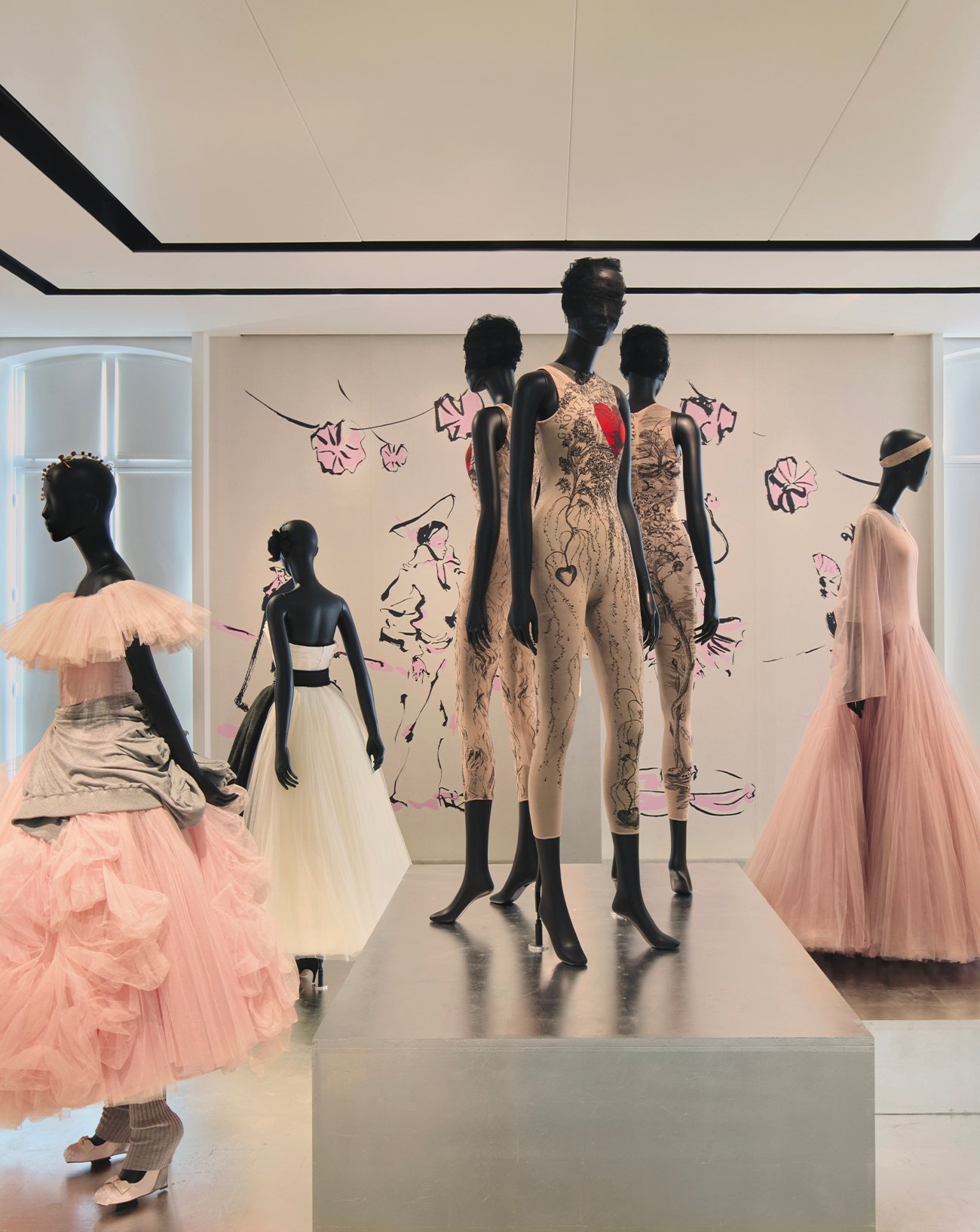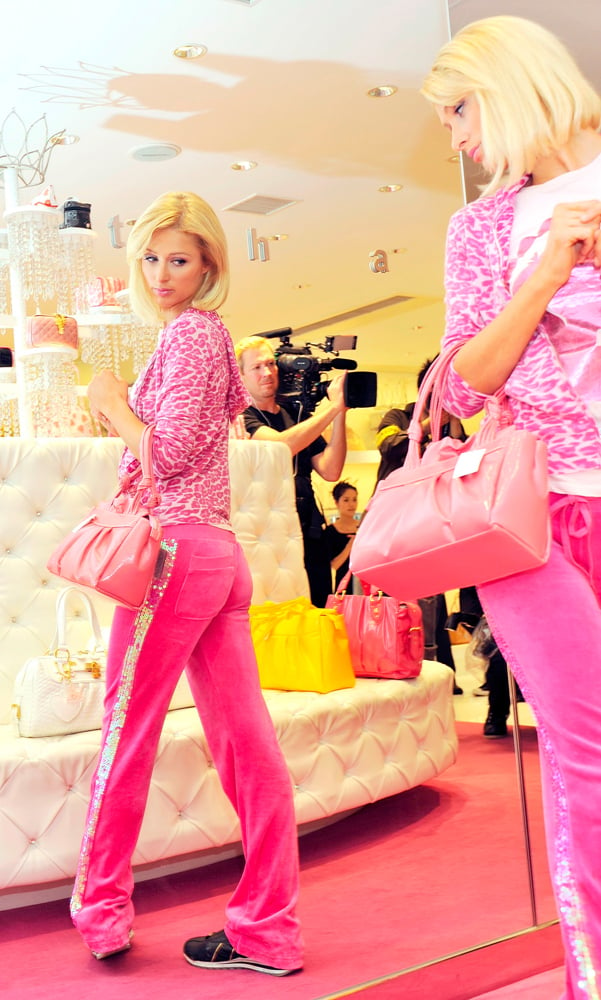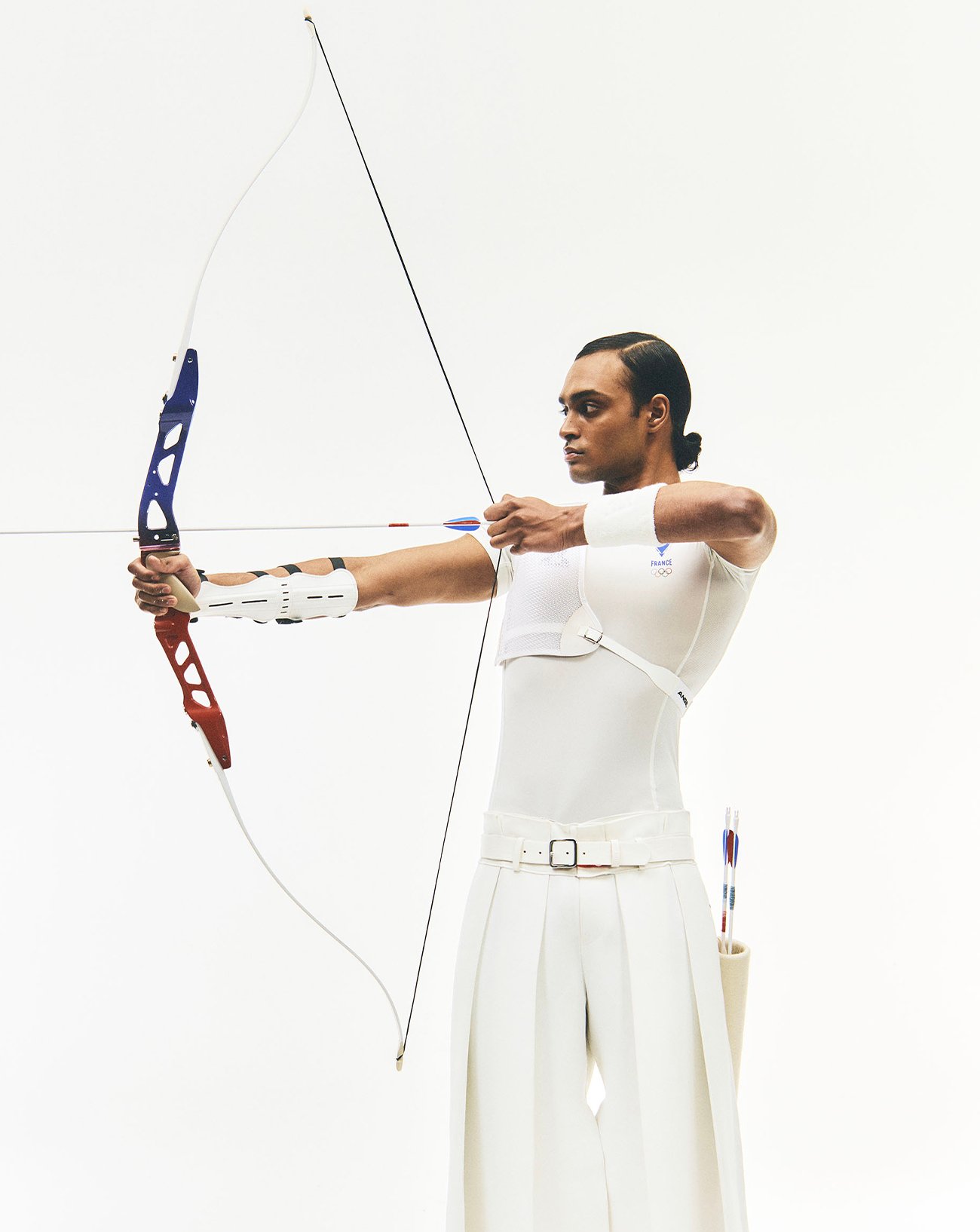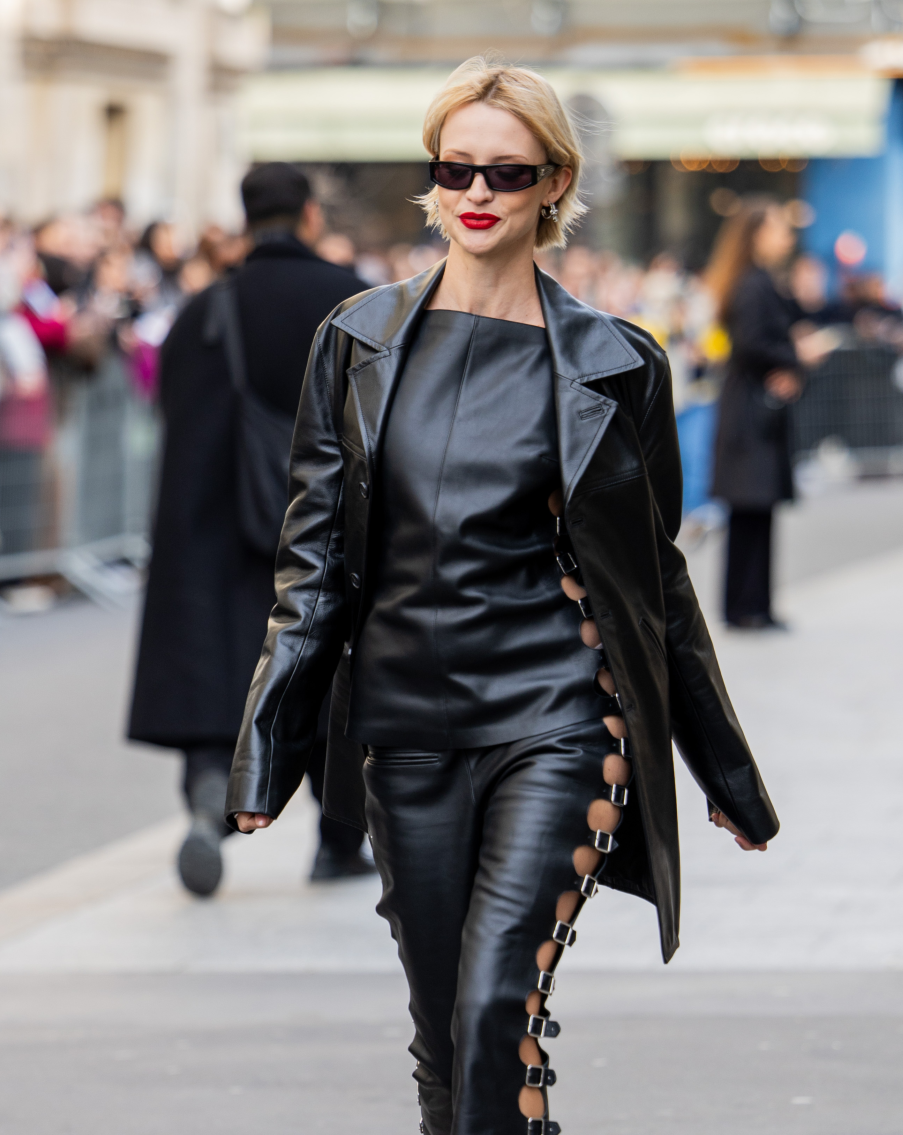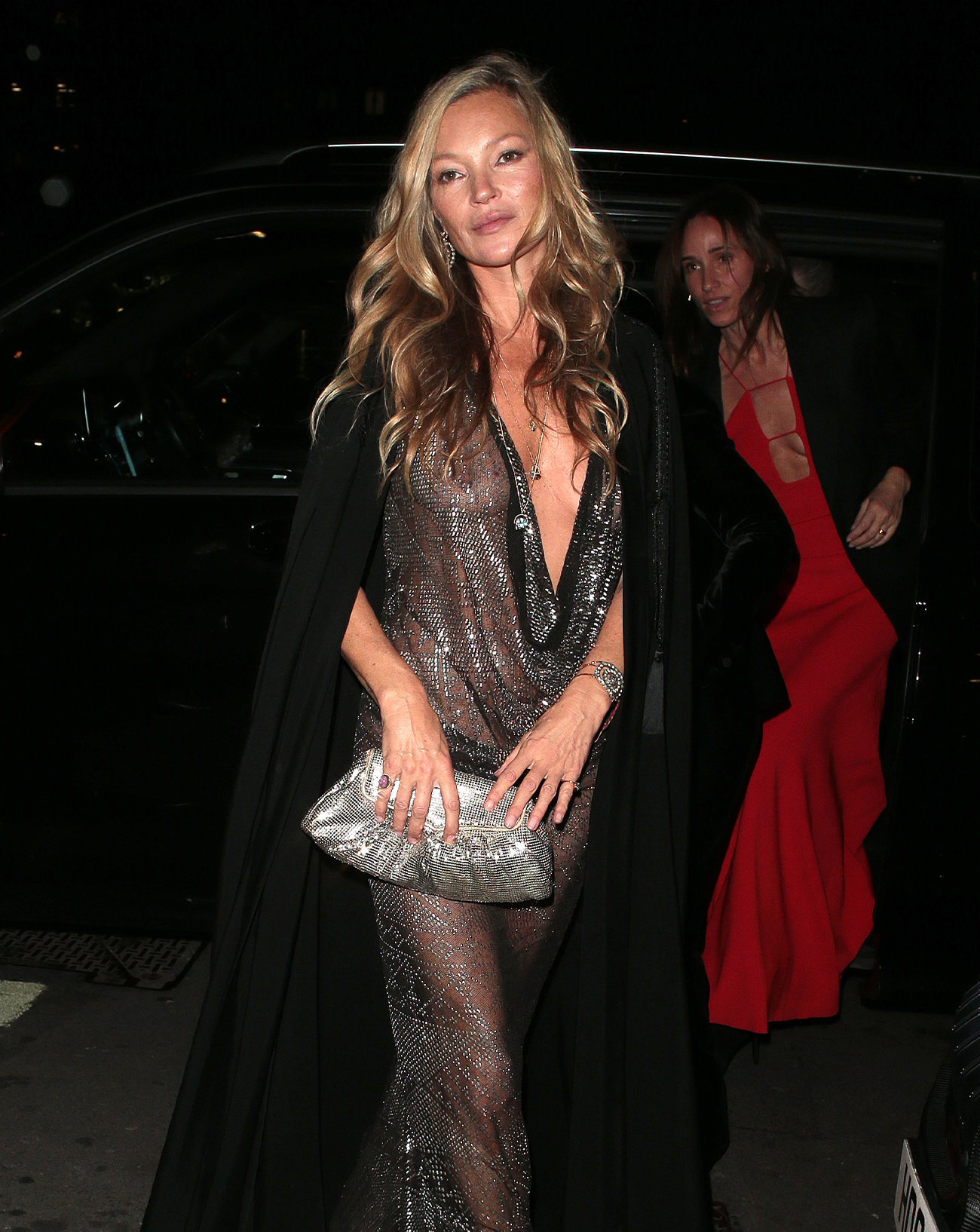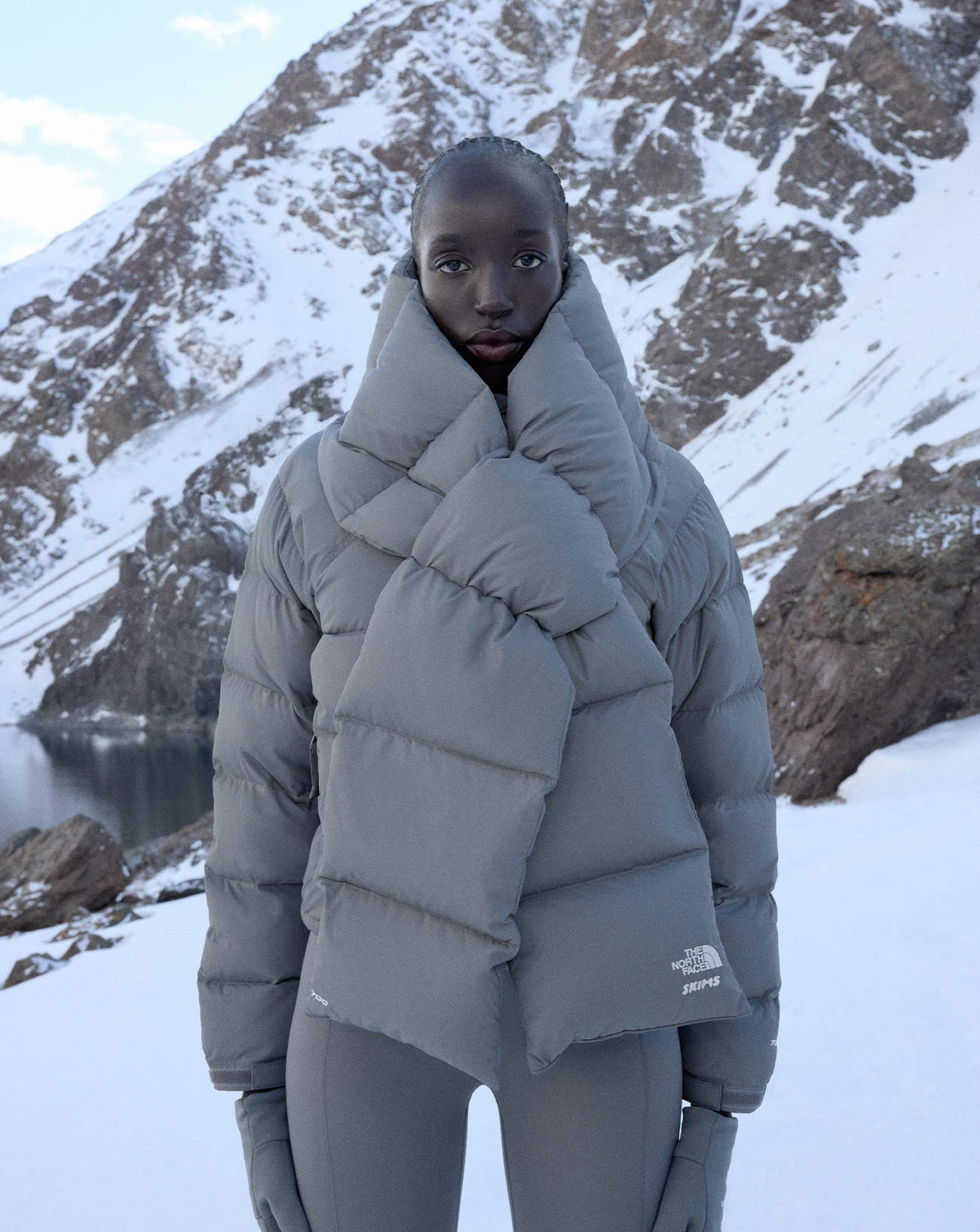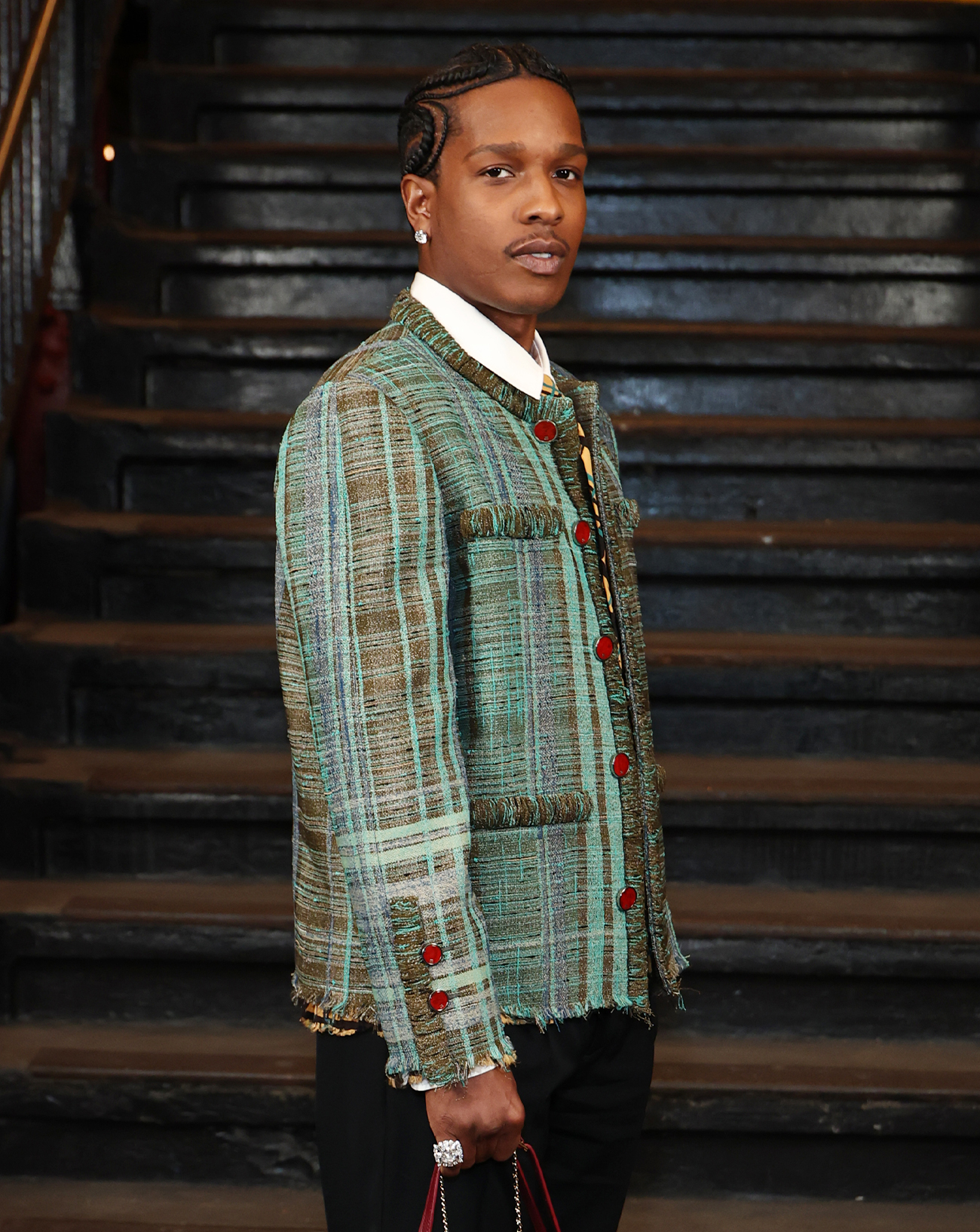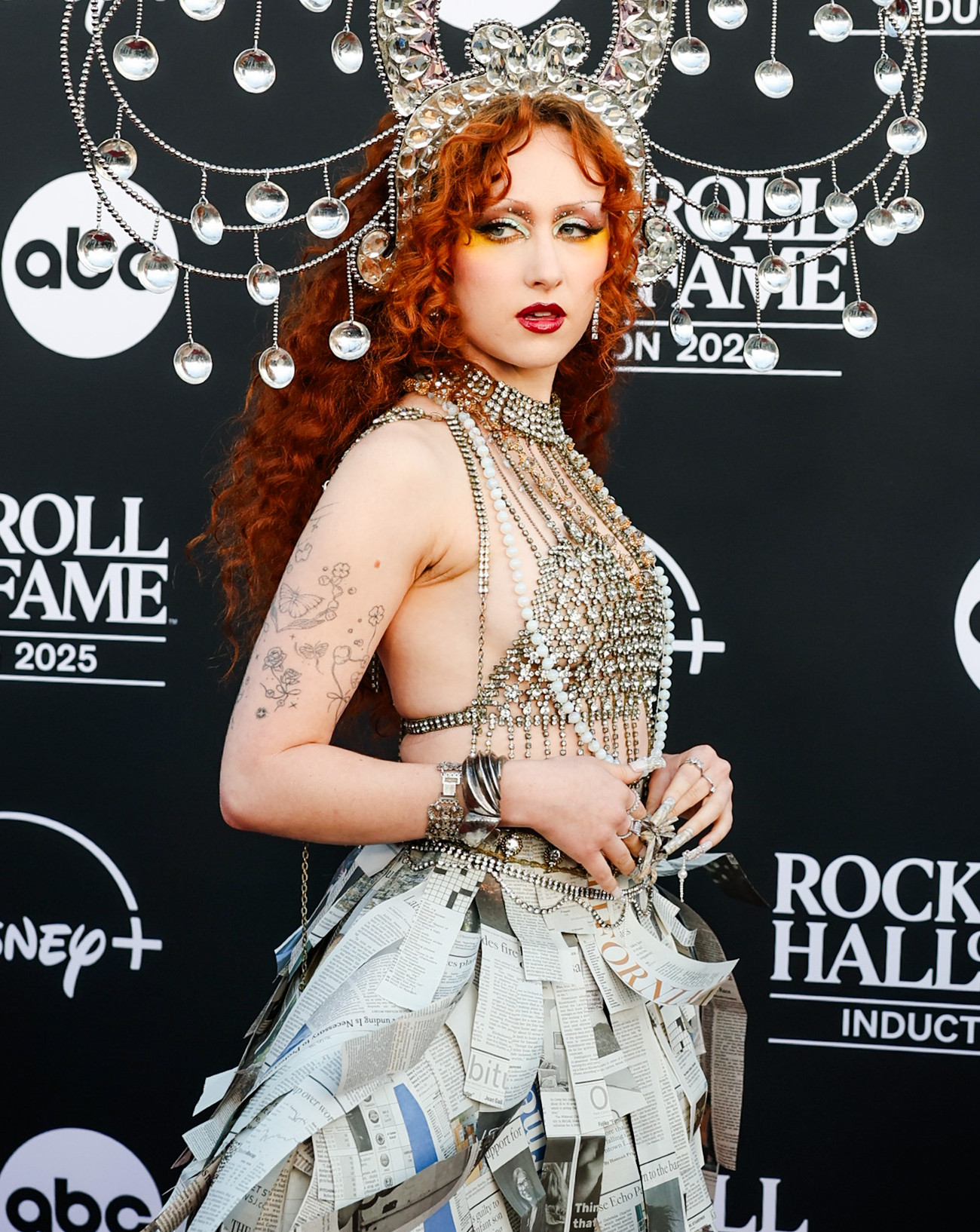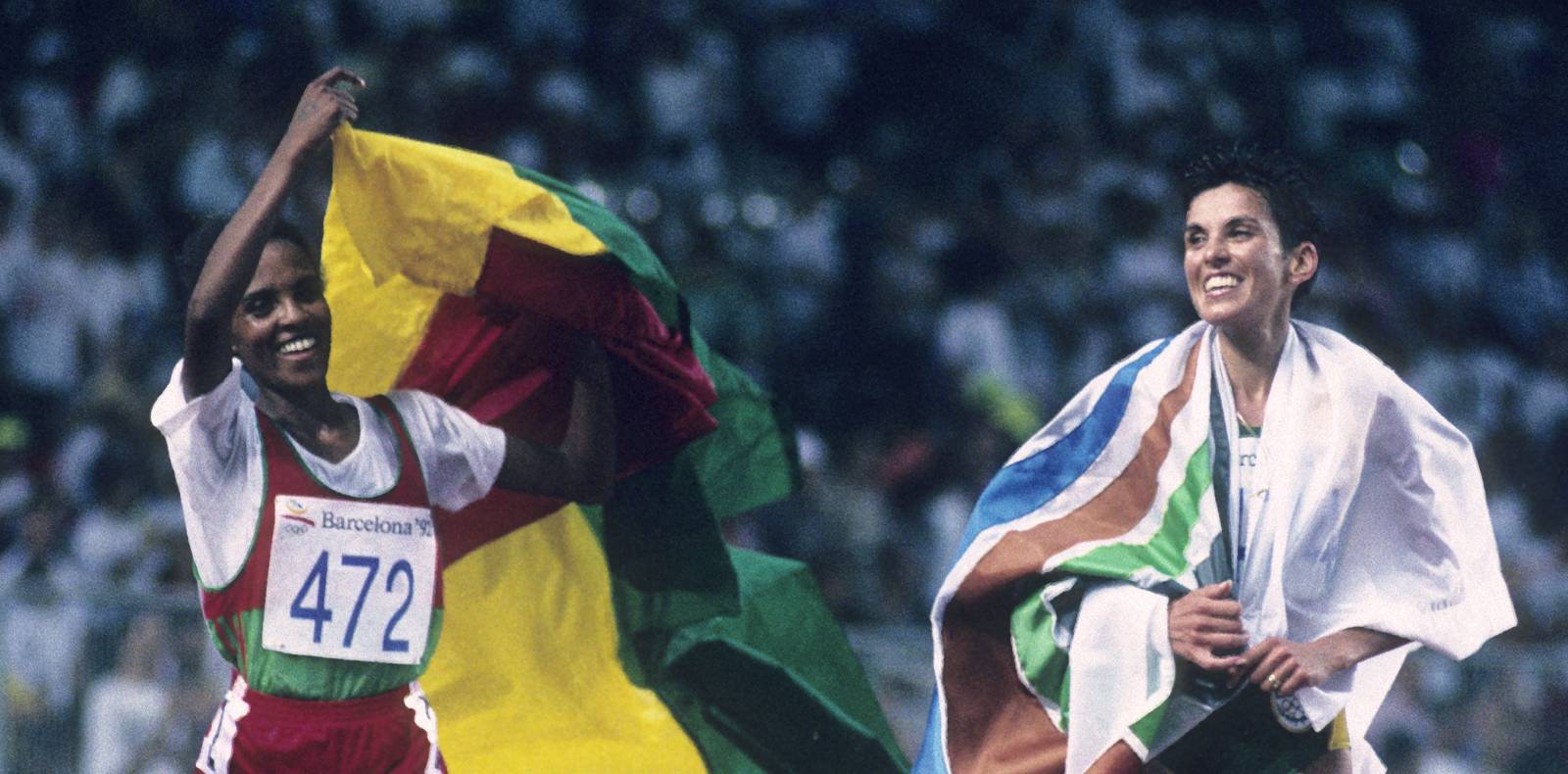
26
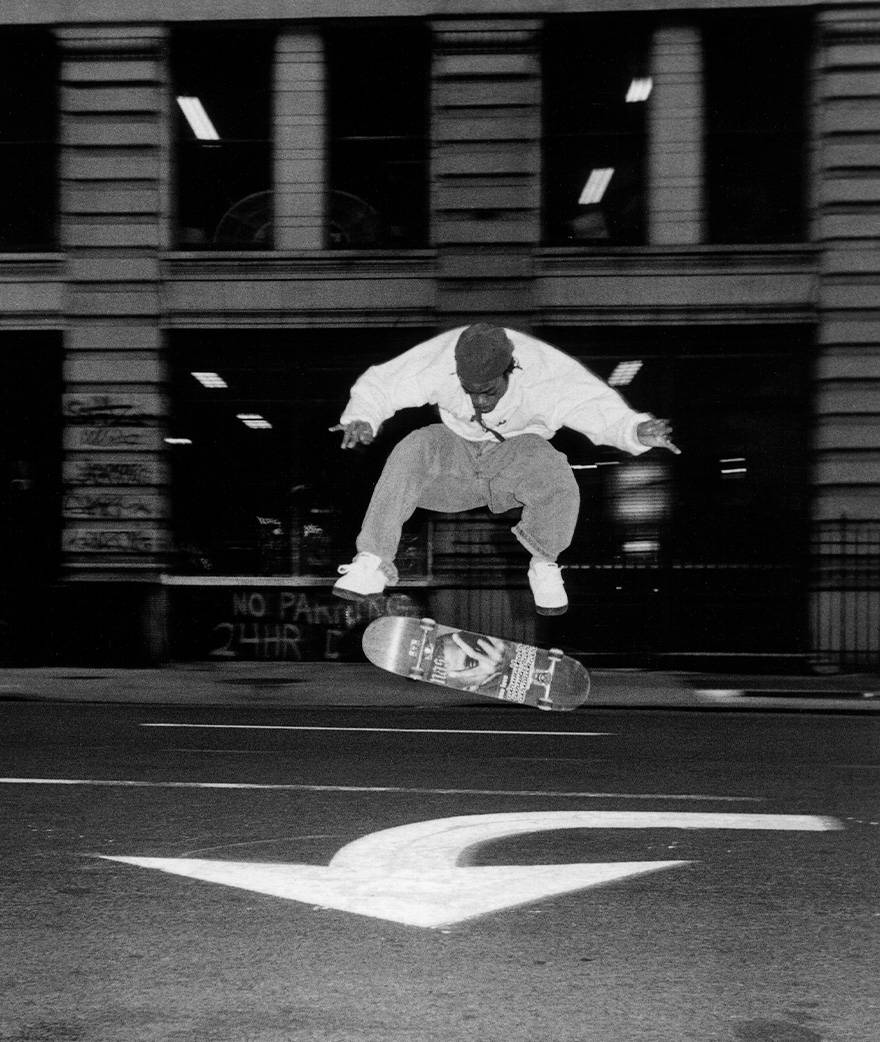
26
17 exhibitions about sport to discover in the run-up to the 2024 Olympic Games
Discover 17 exhibitions about sport seen through the lens of fashion, design, photography and architecture, a must-see in Paris in the run-up to the 2024 Olympic Games.
by Nathan Merchadier and Louise Menard.
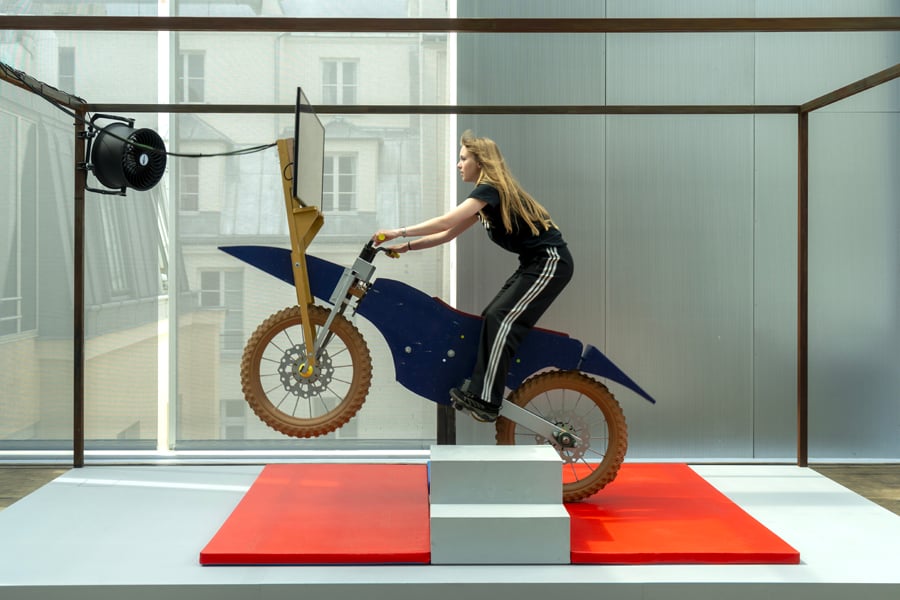
The Gagosian Gallery unveils an eclectic exhibition about sport
A few weeks before the opening ceremony of the Olympic Games in Paris, the Parisian gigantic Gagosian Gallery and the Olympic Museum in Lausanne unveiled a group exhibition in which artists highlight the place of sport in our contemporary societies.
With an event divided in two parts, Gagosian is presenting artworks both in its gallery at rue de Castiglione and within the walls of its other exhibition space located at rue de Ponthieu. The first one offers a wide range of media, from the 1969 photograph Jeux Nocturnes by Man Ray to an ultra-realistic sculpture of a bodybuilder captured by the American Duane Hanson (circa 1990) or a monochrome surfboard by contemporary artist Marc Newson.
At rue de Ponthieu, the gallery displays a selection of archival posters from past editions of the Olympic Games, such as Robert Rauschenberg’s poster Star in Motion (1982), chosen as the official poster for the 1984 summer edition in Los Angeles, or Cy Twombly’s emblematic print used for the 1984 Winter Olympics in Sarajevo. Works by legendary artists such as Keith Haring, Christo and Andy Wharol will also be exhibited this summer.
“The Art of Olympics”, from June 6th to September 7th, 2024 at Gagosian Gallery, rue de Castiglione and rue de Ponthieu in Paris.
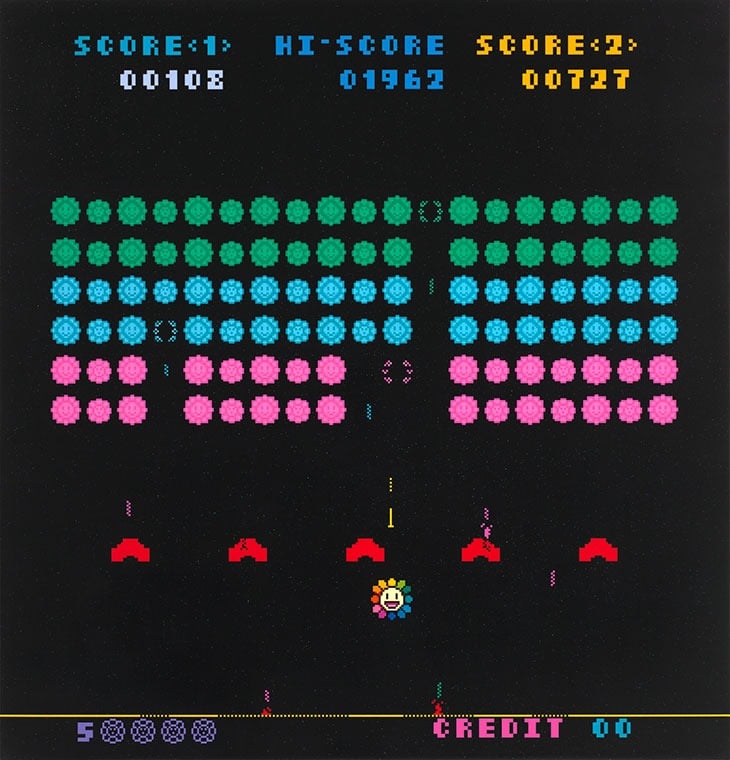
La Métropolitaine reconnects with the greater Paris
While Paris is home to some of France’s most prestigious cultural institutions, many exhibition venues and incubators for artistic creation can also be found outside its borders, in numerous regional cities. La Métropolitaine, a brandnew contemporary art biennial intends to promote this least well-known breeding grounds with its very first edition until September 15th, 2024.
Through this new project initiated by the greater Paris, 13 emblematic venues such as the MAC VAL in Vitry-sur-Seine, Hangar Y in Meudon, the MABA in Nogent-sur-Marne and the Réserves du Frac Île-de-France in Romainville, are brought together in a program that redefines the cartography of contemporary art. Among exhibitions, round-table meetings, conversations and workshops for children, the summer offerings address themes directly linked to the Olympic Games, such as the body and its endurance, the place of technology in sport, the daily lives of athletes and the impact of the Olympics on their surroundings.
Among them, Crédac, a cutting-edge art center founded in 1987 in Ivry-sur-Seine, welcomes French artist Julia Borderie for the occasion. With the help of players from the local Basket Sport Union, Borderie reinvents the rules of basketball by installling her sculptures on a local court to create a performance that she has filmed. Other institutions linked to La Métropolitaine are weaving explicit bridges between their exhibitions and their field of expertise. For instance, the Musée national de la céramique and the Manufacture de porcelaine in Sèvres have created an unexpected encounter between ceramics and sport. The exhibition features unique works, such as the trophies designed by students at the Beaux-arts de Paris, which will be presented to the gold medal-winning athletes at the end of the Olympic Games.
Another eagerly-awaited event in this eclectic program will be the hot-air balloon flying from place to place, echoing the one that flew over the capital during the 1924 Olympic Games. A century later, the balloon is part of a four-act sensory opera, Earth, air, fire, imagined by multidisciplinary artist Maxime Rossi. Combining sport and art, this original and surprising experiment will continue to build bridges between the two worlds.
Exhibitions by La Métropolitaine run at 13 contemporary art venues in greater Paris until September 15th, 2024.

The BnF pays tribute to women’s sport
In addition to what we already know about the 2024 Olympic Games and the expectations that the event generates, there is one key aspect that is not often mentioned – the Olympics will feature an unprecedented absolute parity between men and women.
Featuring over 250 documents from its collections, the Bibliothèque Nationale de France (National Library of France) traces back the history of women’s sport in France from the end of the 19th century to today. With articles, photographs, posters, drawings, magazine and book covers on display, the exhibition highlights the struggle of women to achieve the same status as men in the world of sport.
From the stories of great pioneers, such as tennis player Suzanne Lenglen (1899-1938), to the renaissance of women’s sport in the 1950s, the narrative being unfolded here reflects the conditions faced by French women and the issues pervading both our past and present society.
The journey ends with the #MeToo movement, the liberation of speech and its consequences, and points to the inequalities that remain, in a world where men have made all the rules.
“À nous les stades! Une histoire du sport au féminin”, from May 22nd to October 13th, 2024 at the BnF in Paris.

A moving dialogue between athletes and art at the Petit Palais
As part of its contribution to the 2024 Olympic Games in Paris, the Petit Palais is staging an astonishing exhibition, featuring some 50 artworks and videos of French athletes and para-athletes. Twelve top athletes have picked a sculpture, a sketch or a vase that is dear to them and recounted what that work of art means for them in their life or sporting discipline.
From ancient amphora depicting javelin throwing and Bracquemont vases used as trophies in 1924 to works celebrating the body in motion, such as Jean-Baptiste Carpeaux’s sculpture Les Trois Grâces (1872) and Louis Gaussin’s Le Dénicheur d’aigles (1890), the exhibition invites visitors to (re)discover the history of sport in its plurality and subjectivity.
Thanks to the portraits and confidences of athletes like Aziza Benhami, Léopold Cavalière or Charline Picon, the museum extends the great project of the Cultural Olympiad, while offering a new lease of life to its permanent collection through the lens of the Olympic Games.
“Le Corps en mouvement”, until November 17th, 2024 at the Petit Palais in Paris.

Ari Marcopoulos invites skateboarding to the Musée d’Art Moderne in Paris
Like all great institutions, the Musée d’Art Moderne de Paris (MAM – Paris Museum of Modern Art) is constantly thinking about new ways to explore its gigantic collection of over 15,000 works. From spring to the end of summer, the Parisian institution of modern art is orchestrating an “Art and Sport Journey” within its permanent galleries, guiding visitors through some of its masterpieces focused on the body in motion, such as canvases by Robert Delaunay, Raoul Dufy, Katherine Gradford, and of course Matisse’s famous triptych La Danse (1930-1933).
But this international event also enabled the Parisian institution to develop a new contemporary art project, giving New York photographer and filmmaker Ari Marcopoulos carte blanche. In a custom-designed installation opening on April 5th, this underground culture aficionado is unveiling Brown Bag for the first time, a short film he shot on Super-8 in 1993 that he has recently rediscovered and reedited.
Kept in the Parisian museum archives since 2021, the video follows a community of skateboarders through the streets of New York and pays tribute to a discipline long associated with the counterculture, which has now joined the elitist list of official Olympic events. Besides, skateboarding has a very special link with the building of the MAM, as for the past thirty years, the open space between the Museum of Modern Art and the Palais de Tokyo, known as the “Dôme”, has been a playing ground for skateboarders wishing to practice around the central pond, just a few meters away from the riverbanks of the Seine.
In addition to the screening, the institution has also invited Ari Marcopoulos to present some of his photographs alongside classics from his own permanent collection, selected according to his own preferences, from Giorgio de Chirico to Annette Messager and Brassaï. A dialogue skilfully orchestrated by the 67-year-old American artist, who made the following statement about his installation in a press release: “I looked for themes related to the body, injuries, and architecture, along with what I saw as challenging and puzzling works.”
“Modern Life. Art and Sport” and “Beware. Carte blanche à Ari Marcopoulos”, until August 25th, 2024, at the Musée d’Art Moderne in Paris.

The obsession of Impressionist painters with sport at the Musée Marmottan Monet
Evolving from an activity solely practiced in very private bourgeois circles to a leisure more and more accessible to all, sport has quickly become a symbol of modernity, encouraged by many French painters at the time. The new exhibition at the Marmottan Monet museum in Paris, dedicated to the art of the second half of the 19th century and to Impressionism in particular, focuses on this turning point.
At that time, leading artists of the pictorial movement such as Claude Monet, Alfred Sisley and Edgar Degas regularly attended horse races and fencing fights that they enjoyed depicting later on canvas. Other artists, such as Maurice Denis, Robert Delaunay and André Lhote, painted practices that were in fashion later on, especially cycling and team sports like rowing and rugby.
With nearly 160 works featured in the exhibition, the theme of wrestlers is particularly present and cherished by artists, probably for the way it allows them to work on the body. Revealing a shift in attitudes towards sport and its uses, the exhibition is enriched by excerpts from the illustrated press of the time, which began to praise athletes and promote bodies sculpted by physical activity.
“En jeu! Artists and Sport (1870-1930)”, until September 1st, 2024, at the Musée Marmottan Monet in Paris.

Kenzô Tange and Kengo Kuma, two great architects of the Tokyo Olympics celebrated at MCJP
While Paris is hosting the Olympic Games this summer for the third time in its history – previous editions includes those of 1900 and 1924 – another great international metropolises has been hosting them several times, first in 1964 and then in 2021: Tokyo. This is the story that the Maison de la Culture du Japon in Paris (MCJP) has chosen to tell, by bringing together two major figures in these events until the end of June, the infamous Japanese architects Kenzô Tange (1913-2005) and Kengo Kuma (b. 1954).
In an exhibition featuring a wide range of models and photographs tracing back the stages of their respective projects, the museum creates a dialogue between two creations – the Yoyogi National Gymnasium designed by Kenzô Tange in 1964, and the National Stadium imagined by Kengo Kuma in 2021. By discovering the practices and influences of these two fascinating figures, the audience is immersed in two very distinct eras, but also, more globally, in the history of Japanese architecture and its heritage, from which each of these two designers drew their own inspiration.
As with most of its projects, the MCJP is using the event to highlight the links between France and these two Japanese artists. Here, for instance, we discover letters exchanged between Le Corbusier and Kenzô Tange, as well as behind-the-scenes footage of the new Musée Départemental Albert-Kahn in Boulogne-Billancourt, a building designed by Kengo Kuma which opened in 2022.
“Kenzô Tange – Kengo Kuma, architects of the Tokyo Games”, until June 29th, 2024 at the Maison de la Culture du Japon in Paris.

Louis Vuitton exhibits its trunks in its family home
Louis Vuitton is well-known for its commitment to the world of sport. With the upcoming Olympic and Paralympic Games, the fashion house has unveiled 21 trunks dating from 1865 to the present day, inspired by the iconic ‘Courrier’ trunk designed in 1858 in its workshops in Asnières-sur-Seine, France.
Whether tagged, fluorescent, adorned with acid colors or with the famous Monogram canvas, these luxurious trunks are magnificently staged, surrounded by multiple mirrors, as a beautiful tribute to the history of the French house and its expertise.
The exhibition uses sport as a directive line and features small objects from the house’s archives, such as a tennis racket cover from 1979, a bowling ball bag recently imagined by Pharrell Williams, as well as unique trunks that have left their marked on the collections, including Virgil Abloh’s Pickleball trunk (2021) and a trunk designed by Kim Jones in collaboration with the label Suprême for the men’s Fall/Winter 2017-2018 show.
“La Malle Courrier – Louis Vuitton and sport”, until December 2024 at the Maison de famille de Louis Vuitton, 92600 Asnières-sur-Seine.

The exhibition “Fashion on The Move” is making a comeback at Palais Galliera
For the second part of its exhibition “Fashion on The Move”, the Palais Galliera unveils new pieces exploring the central role of sportswear in the history of fashion from the 18th century to today with over 250 new pieces.
The exhibition includes a section devoted to beachwear, featuring suits, swimsuits and other beach accessories, such as a Madame Grès ensemble from the 1960s, a Claude Montana swimsuit from 1988 and one of the very first bikinis designed by Louis Réard in the late 1940s.
From horse riding and cycling to tennis and golf, the Parisian museum also addresses the growing importance of sport in our daily lives, as well as the place of women within this sector. It’s an opportunity to better understand the current trend towards sportswear, as well as the evolution of beauty canons largely influenced by the emergence of summer leisure activities, leading to a new kind of body exposure.
“Fashion on The Move #2”, until January 5th, 2025 at the Palais Galliera in Paris.

The Samaritaine presents the exhibition “Paris se prend au jeu”
Since its creation in 1870, the department store Samaritaine, ideally located between the Rue de Rivoli and the Seine, has undeniably been fertile ground for sports fans. As early as 1930, its founders Ernest Cognacq and Marie-Louise Jay inaugurated the very first gym dedicated to their employees. With the Paris 2024 Olympic and Paralympic Games, the institutions will dedicate 3,400 square meters of floor space to all kinds of sports.
Fisheye Magazine will be exhibiting photographs as a prelude to the release of “Journal of an Athlete”, the private narrative of fencer Enzo Lefort’s training for the Paris 2024 Olympic Games, while Parisian artist Camille Menard will be presenting a series of colorful art installations, questioning the links between sport and our daily lives.
“Samaritaine Paris se prend au jeu”, until September 8th, 2024 at the Samaritaine in Paris.

An exhibition recalls the history of the Olympic medal at La Monnaie de Paris
While the gold, silver and bronze medals for the Paris 2024 Olympic Games were designed by the jewelry house Chaumet and manufactured by La Monnaie de Paris, this Parisian institution specializing in metal craftsmanship is presenting a fascinating exhibition on the history of the Olympic medal.
From the very first medal engraved by the French medallist Jules Clément Chaplain for the 1896 Olympics in Athens, to the crystal medals designed by the infamous Maison Lalique for the Albertville Winter Games in 1992, the exhibition bears witness to the evolution of this coveted little object throughout the different Olympic Games and societies.
The exhibition also underlines the major role played by La Monnaie de Paris in the creation of these awards, and presents several objects from its historic collections, some of them are displayed for the very first time to visitors. A case in point is the bronze medal from the first Olympiad, made in the image of the Greek gods.
“Gold, silver, bronze. A history of the Olympic medal”, until September 22nd, 2024, at La Monnaie de Paris.

The exhibition “Match. Design & Sport” at Musée du Luxembourg
If the countless museums and cultural institutions of the capital are harmonizing their program with exhibitions dedicated to sport since the announcement of the Paris 2024 Olympic and Paralympic Games, design aficionados won’t be outdone by discovering the exhibition “Match. Design & Sport” at Musée du Luxembourg.
With over 150 objects and installations on display, the Musée du Luxembourg reveals the many ways in which design has influenced – and sustainably improved – the everyday lives of athletes, from the aerodynamic helmets used by skiers to the ultra-light fabric meshes used by cyclists. Until August 11th, sports fans will be able to find common ground with design enthusiasts by observing how materials that combine ergonomics and aesthetics can, in certain cases, become the athletes’ best allies.
“Match. Design & Sport”, until August 11th, 2024, at the Musée du Luxembourg in Paris.

The Louvre uncovers the history of Olympism in a unique exhibition
Where did the Olympic Games as we know them today come from? This is the question the Louvre is trying to answer with its new exhibition running until September 16th, 2024. Taking as its starting point the original competitions of ancient Greece, the museum traces back the thought processes of a number of modern-day historians, archaeologists and scientists that led to Olympism.
Although our current vision of the Games is quite different from that of the Greeks, the event hasn’t lost its unifying aspect, and even today possesses symbols similar to those of the past.
Bringing together paintings, trophies, sculptures, stamps and posters, the exhibition shows how some of today’s iconography has been modeled on that of antiquity, and also presents rare objects, such as the very first silver Olympic cup, the Bréal Cup, created in 1896.
“Olympism. A modern invention, an ancient heritage” until September 16th, 2024, at Musée du Louvre in Paris.

“Olympism, a History of the World” exhibition at Palais de la Porte Dorée
At the Palais de la Porte Dorée, the social and geopolitical aspects of sport are on full display. From April 26th to September 8th, the exhibition “Olympism, a History of the World” tackles over 130 years of political, social and cultural change since the creation of the modern Olympic Games in 1896.
Through the presentation of archives and portraits of athletes with fascinating destinies, the space located in the 12th arrondissement of the capital gives an account of a history punctuated by political crises and struggles – especially in favor of equality or against racism and discrimination. Immersed in a chronological tour including period photographs and archive films, visitors will discover the hidden aspects of some thirty international sporting events, from the 1896 Olympic Games in Athens to the Paris 2024 Olympics.
“Olympism, a History of the World” until September 8th, 2024, at Palais de la Porte Dorée in Paris.

Cité de l’Architecture celebrates sport in a joint exhibition
The Cité de l’Architecture et du Patrimoine unveils two exhibitions of unprecedented scope, retracing the history of the stadium, the flagship monument of the Olympic Games, and questioning the urban reorganization implied by that event.
Built to host popular sporting competitions, such as soccer and rugby, stadiums were born in the 20th century as a result of the widespread democratization of sport and sometimes take the shape of true architectural masterpieces. From drawings and models to period photographs, the Cité de l’Architecture illustrates the evolution of these giant constructions and highlights the place they now occupy in the collective imagination.
Keeping up with the spirit of the world’s greatest sporting event, the second exhibition offers a new edition of the Mini Maousse competition. This year, students are invited to create a nomadic mini fan zone that will travel around the department of Seine-Saint-Denis. The aim of the project is to create a sharing space and to bring sport to environments far removed from the Olympic Games.
“Once Upon a Time, Stadiums” and “Mini Maousse 9. Quand la ville se prend au jeu”, until September 16th, 2024, at the Cité de l’Architecture et du Patrimoine in Paris.

The Art & Sport program invades French sports facilities
Importing contemporary art into venues traditionally used by athletes – like swimming pools, soccer stadiums, tennis courts – is the challenge launched by the Art & Sport event, an initiative launched by the cultural operator GrandPalaisRMN. Aiming at building bridges between the worlds of art and sport, this large-scale program offers visitors throughout France the opportunity to discover a multi-faceted exhibition, drawing on the vast collections of France’s 22 Fonds Régionaux d’Art Contemporain (Regional collection of Contemporary Art).
From Saint-Brieuc to Marseille and Paris, visitors will be surprised by videos and sculptures made by emerging and established artists, such as Daniel Firman and Mohamed Bourouissa. So many exciting reasons to discover an itinerary outside the walls – and for the most part far from the hustle and bustle of Paris – exporting the multiple media traditionally associated with contemporary art to a whole new setting.
“Art and Sport”, a program to be discovered until November 1st, 2024, in 13 regions of France.

Choreographer Philippe Découflé honored at CNCS Moulins
More than 30 years ago, the Albertville Olympic Games took place in Savoie, France. The baroque, avant-garde opening ceremony broadcasted on television and watched by nearly two billion left an indelible mark on the world. Wearing costumes designed by Philippe Guillotel, over 3,000 artists took part in the two-hour show, orchestrated by the talented choreographer and dancer Philippe Découflé.
In addition to retracing his career over four decades, through more than 100 costumes, the National Center of Stage Costume (CNCS) is dedicating part of its exhibition “Planète(s) Découflé” to the unforgettable Albertville Olympic Games.
From a magical aerial ballet performed by acrobats dressed as birds, to a parade of stilt-walkers wearing white and red costumes, or a waltz of skaters in gold jumpsuits, the 1992 opening ceremony imagined by Philippe Guilotel and Phillipe Découflé and inspired by the universes of circus and funfair arts, paved the way for an avant-garde fusion between arts and sport.
This alliance has infused the spirit of future editions of the Olympic Games, even interfering with the set-up of the Paris 2024 Games, which has already been organizing numerous exhibitions over the past weeks with the same aim in mind – the union between art and sport. In any case, we hope that the forthcoming opening ceremony on July 26th, 2024, on the River Seine, will live up to all promises and expectations.
“Planète(s) Découflé”, exhibition until January 5th, 2025 at the National Center of Stage Costume (CNCS) in Moulins, 03000.






